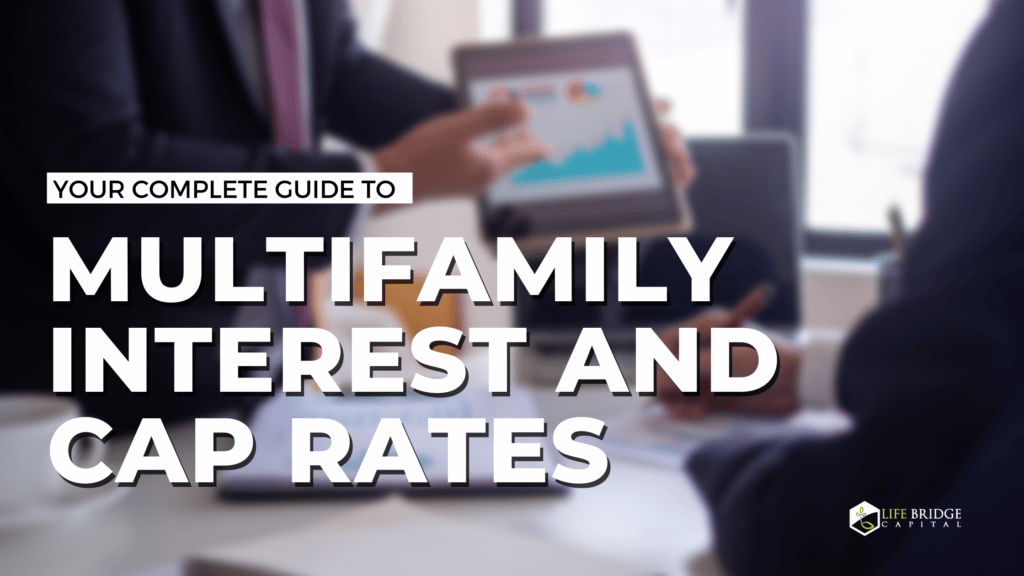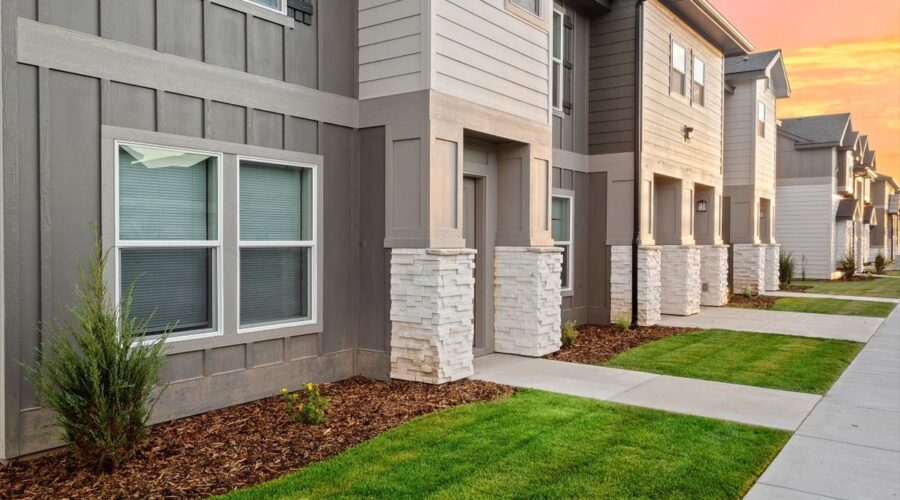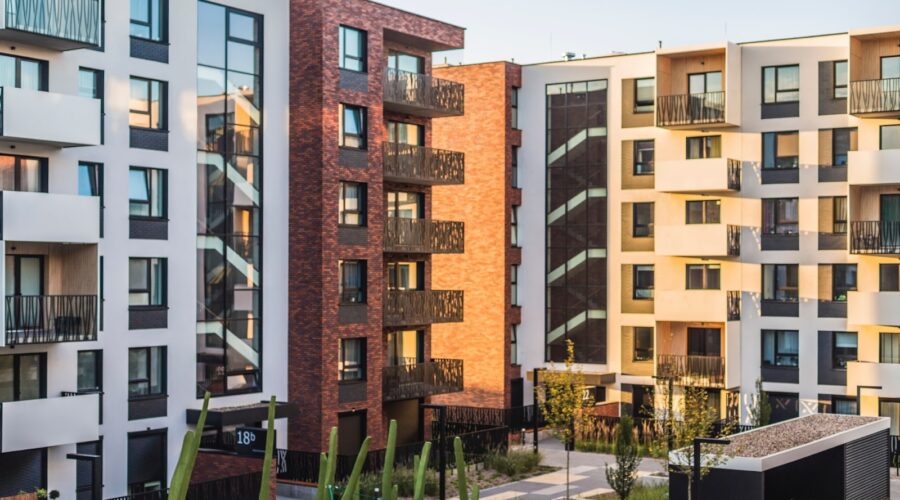
In the multifamily housing industry, even small changes in interest rates significantly impact buying power and overall profit. It is no coincidence that investors who work in multiple states may notice consistent rate differences. But location is just a minor contributor to the overall interest. A multi-family investment property is also affected by cap rate. Read on to understand all the factors that create the final rate and what you need to know when considering a new investment.
Multifamily Interest Rates
There is no set national mortgage interest rate, which is why many investors work with a mortgage broker to find the best loan rates and terms. Contrary to popular belief, the Federal Reserve does not set mortgage interest rates for multifamily properties or other sectors. Instead, it establishes the federal funds rate, which banks charge each other to borrow money overnight. They borrow the money to meet minimum reserve limits — as the federal funds rate increases so do the cost of doing business for the bank. In turn, banks pass the increased cost on to the consumer through higher mortgage interest rates.
On average, expect investment property rates to be 0.5 to 0.75% higher than those for owner-occupied properties. For example, on a 10-year, $500,000 loan, an interest increase of only 0.25% costs about $7,000 over the loan’s life.
Property Location
Interest rates fluctuate based on personal metrics like credit scores, loan-to-value ratios, and loan terms; however, a property’s location also impacts the borrower’s offered interest rates. Location is minor, but even small increases in an interest rate cost the borrower in the long run. This is even more noticeable for larger loans such as those associated with a multifamily property.
Lender Competition
Competition between lenders usually bodes wells for consumers and leads to more favorable interest rates. The multifamily mortgage market is no different, and rates vary by state based on the number of lenders trying to earn business.
Lender Costs
Lenders’ business costs vary by state and get passed along to consumers through higher interest rates. States with higher living costs must pay employees more to retain them, and more expensive office costs and licensing fees create additional overhead expenses that get passed along to customers.
Lender Risk
Finally, lender risk varies by state, and higher levels of risk prompt higher interest rates to create a financial cushion against loans that inevitably default — the average default rate in the area affects lenders’ interest equation. Recent interest rates reflect lenders’ concerns about the local economy may be prominently weighing in on average interest rates.
- Mississippi, a state with an unemployment rate of 5.8% as of September 2021, also had an average 15-year fixed mortgage rate of 2.74%.
- Utah’s 5-year fixed mortgage rate was only 2.27%, and its unemployment rate was 2.4%, the second-lowest in the country.
- Virginia falls in the middle of the pack, both in terms of interest rates and unemployment. The 15-year fixed mortgage rate was 2.59%, and the unemployment rate was 3.8%.
Default risk is closely tied to a state’s overall economy. Thus, those with higher unemployment rates, poor growth, or other poor economic symptoms can expect more defaults. Then lenders pass that increased rate onto single-family homebuyers and multifamily property investors alike.
Multifamily properties present a greater lender risk than a traditional mortgage on a single-family home because it is an investment that is usually not owner-occupied. The savvy lender knows that a business is rarely a priority compared to a family home. As such, that risk warrants higher interest rates.
Multifamily Investment Cap Rates
The capitalization, or cap rates, of income-producing properties, is one of the most basic and commonly used metrics to provide a quick peek into a property’s financial condition and insight into overall market trends.
The simple formula gives us essential information about a property’s performance concerning its value or purchase price. To find the cap rate, divide a property’s net operating income/current market value (NOI/current market value=capitalization rate). Net operating income is simply the income minus the expenses.
Importance of Cap Rates
Cap rates reveal some essential characteristics of a property: risk and price. Lower cap rates indicate that a property is less risky but more expensive. Investors hold different views on what cap rates they want for their investment strategy. Many investors pursue properties without the lowest cap rates in search of a bargain that can be improved to create significant gains in appreciation in just a few years. Alternatively, others buy the low-cap rate, expensive properties, knowing that the low-risk investment with a steady income and modest appreciation outperforms the stock market.
Cap Rates by Asset Class
When analyzing cap rates, keep in mind that the more similar the properties, the more accurate the comparison. Only compare the cap rates of assets of the same class. Asset class is a 4-tier rating system encompassing the property’s age, condition, location, and quality.
Class A properties are less than 10 years old, have the best amenities, and are most desirable. These characteristics all reduce the risk of multifamily property ownership by signaling reduced repair expenses, continual demand, and high rents. As a result, class A properties generally have the lowest cap rates.
The scale goes down to class D, including buildings 30 years or older. Besides being older, class D properties are in poor condition with many critical repairs needed, may be located in abandoned or highly undesirable parts of town, and face challenges collecting regular and adequate rent each month. As you may imagine, these buildings generally reflect higher cap rates due to low net operating income.
Cap Rates by Location
Asset class considers the property’s location based on its demand within a city or market. Multifamily cap rates also vary based on the property’s city and region.
CBRE compiles and issues significant cap rate data to contextualize many multifamily markets in the United States. CBRE also provides market-specific cap rate data for multifamily urban and suburban markets across the country in its biennial report. It overwhelmingly captured that in nearly every market, cap rates compressed compared to 2019 despite the tumult of 2020 and the pandemic. In the third quarter of 2021, the Pacific West had the lowest average cap rate, 5.88%, and the highest rate was in the Midwest at 6.82%.
The report is beneficial for getting a glimpse of a “good” cap rate for a particular market. For example, what’s good in Albuquerque (4.5-5%) is not what’s good in Phoenix (3.2-3.75%), demonstrating that two Southwest markets 400 miles apart have very different metrics.
Ideal Cap Rate
After learning about the factors contributing to cap rates, the next question for most people is, “What is a good cap rate for a multifamily property?” Of course, the answer is not simple, but the question is astute. Knowing a good cap rate for a certain type of property in an area gives you an idea of whether it’s well-priced and how its performance tracks with the value.
As with most things, real estate cap rates vary based on region and asset class. However, on average, multifamily real estate as a whole has lower cap rates than a buyer would find with other types of income-producing property, like offices or retail properties. The lower cap rates stem from the overall lower risk of multifamily properties.
Generally, cap rates between 4-10% are considered typical and a sign of a promising property. According to a recent study, the average multifamily cap rate in the United States is 6.38%.
Will Rates Increase in 2022?
Given October 2021’s inflation rate of 6.2%, many expect the Federal Reserve to raise the federal funds rate in the upcoming year. Increasing the federal funds rate slows economic growth and raises costs and prices, and mortgage interest rates usually follow.
An opposing view is that the COVID-19 pandemic is the abnormally high inflation rate’s source and, therefore, temporary and will not require correction. However, recent comments by key Federal Reserve officials indicate that they consider intervention necessary with plans to raise rates in 2022. Unofficial statements from committee members and officials often foreshadow action by the central bank.
Life Bridge Capital Is Your Rate Guide
Cap rates are just one preliminary data point to consider when searching for and comparing multifamily properties. As with any formula, the results can be skewed by the person calculating them or by the unique features. Use it as a stepping stone for the more conclusive due diligence process.
While investors should be conscious of rate differences between states, they are ultimately a part of doing business in that state. Investors prefer specific states for many reasons, whether personal proximity or an ear to the ground for promising deals. Investors who can purchase in more than one state should be most aware of the rate variance by state and consider that when analyzing potential profits.
If you’re interested in multifamily syndication and need more guidance on the benefits of multifamily investing or rates, contact Life Bridge Capital today to learn more about our unique process and current investment opportunities.


